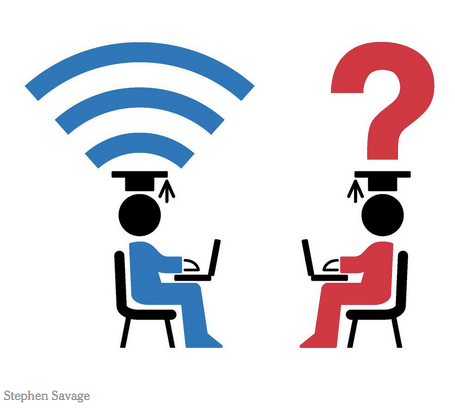A single teacher can reach thousands of students in an online course, opening up a world of knowledge to anyone with an internet connection. This limitless reach also offers substantial benefits for school districts that need to save money, by reducing the number of teachers.
But in high schools and colleges, there is mounting evidence that the growth of online education is hurting a critical group: the less proficient students who are precisely those most in need of skilled classroom teachers.
Online courses can be broken down into several categories, and some are more effective than others.
In “blended” courses, for example, students don’t do their work only online: They also spend time in a classroom with a flesh-and-blood teacher. Research suggests that students — at nearly all levels of achievement — do just as well in these blended classes as they do in traditional classrooms. In this model, online resources supplement traditional instruction but don’t replace it.
In the fully online model, on the other hand, a student may never be in the same room with an instructor. This category is the main problem. It is where less proficient students tend to run into trouble. After all, taking a class without a teacher requires high levels of self-motivation, self-regulation and organization. Yet in high schools across the country, students who are struggling in traditional classrooms are increasingly steered into online courses.




